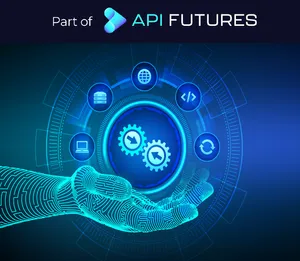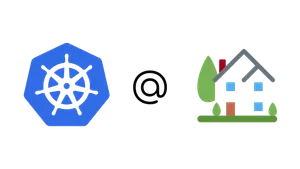As 2020 and the COVID crisis rolled in on us, they became a forcing mechanism for working differently. This post serves as a way to look back on how a team that used to sit together every day made the switch to working from home. If you're facing the same challenges, we will go over the changes that needed to happen and things to lookout for to keep a team effective and healthy.
🏢 How the team worked before
The Platform team of early 2020 was a non-remote team. All of us sat at the same spot in one row of our Amsterdam offices. Everyone had their routine relatively locked in, whether it be for the time people rolled into the office, how we took coffee/lunch breaks, where we would run our rituals. This felt like a well-oiled machine.
We would also make use of our work environment to help us collaborate better. Whiteboarding sessions, walking across the office and talking with another team, having other engineers walk up to our desks to ask anything. It was also an opportunity to connect with non-engineers: WeTransfer is full of talents working different jobs, from Creatives to Support; this ability of connecting with them was a godsend. We were thriving in this environment.
Most of the team wasn't passionate about working from home, occasionally some of us would have one day remote here and there. Nobody had an itch to remote multiple times a week as our office environment was very comfortable.
In early March 2020, I rolled into the office early as usual and while I started prepping coffee a coworker on their way out tells me "Haven't you seen your emails? We're all working from home until the end of the week"
And just like that, our team dynamic would be changed for the foreseeable future. We had to adapt from one day to the next and figure out how to stay the team we were, remote.
💻 What changed during remote times
🦜 Communication We thought our slack channels were used properly and enough. However, after shifting to remote, we noticed quickly that we needed to rely on our team's channel way more.
We had this prejudice that the channel was mostly meant for async work-related conversations only. We quickly realised it needed to be way more than this.
All the banter, side chats, rants and thoughts that used to be shared orally were lost in the transition, and that loss can have huge impact on morale and team happiness.
We also realised that when we were discussing our days, the days that didn't feel great morally often correlated with days where the channel activity had been low. This was often the impact of having teammates deep in their tickets, working on them for hours on end, just to connect back during our rituals. It wasn't working out for us.
☝️ What changed Our takeaway here is rather simple: communicating regularly on our team's channel (e.g. once an hour, at each end of your pomodoro timer) is effective to keep rhythm and team cohesion.
While this felt unnatural at first, a simple message akin to: "still stuck on bug XYZ, tried A and failed, moving on to B" will get your teammates interested, maybe spark a conversation to help out, and most importantly will be a marker of progress in your day.
🧙🏼♀️ Revisited Daily Rituals Our daily rituals naturally needed to evolve. We couldn't expect to religiously follow our previous setup like nothing happened. This is the result lot of trial-and-error, here's the setup we're currently rocking:
🌅 Morning Standup This is a regular agile standup with a twist. We go over our tasks, what happened the previous day, any important info to share, but we also leave the space open for other topics.
We use this time to discuss design, roadmaps, a random thought we had, a cool tool that we tested, etc.
This open-ended standup often becomes a discussion that transcends whichever ticket we're focused on for the day. Since we've allowed ourselves to take more time and not "rush back to our desks" after a round of the table, we feel more aligned. This might seem counter intuitive at first as we started spending close to an hour in "standup", however, this time is far from wasted. This time helps clear up potential missalignment and builds bond between teammates.
🌇 Evening Catch up This one stays optional but is always in our calendar around our end of the day. We're able to connect and debrief our day and talk about anything before disconnecting. This is kind of the drop-in replacement for seeing someone packing their bag at the office and asking them what they're up to tonight.
While this is a more relaxed meeting — it can also lead to interesting conversation and hot takes on what happened throughout the day. It has also the benefit of being a good signal to call it a day — which has become a necessity in this setting.
🍻 Social We used to take the team out for dinner once every couple of months, this time was great to be able to connect in a different environment, share a nice meal and enjoy each-other's company without thinking of which ticket we were working on.
☝️ What changed While this is tough to replace, one thing we found is shipping crates of kombucha/beers/else to every team member. This has the advantage of being an event that can lasts multiple days, from taking time to choose which crate each person wants, sharing a drink during one catch-up, to reviewing together what we received and looking forward to the next crate to get.
☀️ A note on health
Physical Here's the deal, during the first few months of our remote experience, we all kept somewhat of the same schedule, except we replaced commuting, eating lunch with colleagues and coffee machine talk with more work, quick bite in front of the screen, and 1 minute break to grab a drink.
We had overworked ourselves as most of the team started working an hour before they would in the office. Moreover, stayed relatively until the same time they would leave the office. Our lunch breaks were quick — I would even skip lunch sometimes thinking I was too busy.
After some time, we started to feel exhausted by our weeks. We shared the sentiment that days looked similar to one another. We couldn't remember what we were up to the week before. This routine was detrimental to our health.
As it involves changing one's habits — and that will come only from the individual themself — this is tough to act on.
The healthiest takeway here is to be strict about our working hours. Share with your teammates what time you want to disconnect. Call each other out when you're spending too much time. Don't be afraid of leaving when everyone is still connected.
Mental It's to no surprise that the current situation has a big impact on our mental health, spending so much time together as teammates, we can help each other out to keep our heads up throughout the situation.
Everyone will have good days and bad days. Leave space to teammates whenever you see that they are struggling and offer support.
The best move we made is to make our team channel a safe space for sharing how everyone is feeling, on any topic.
Being able to say "Hey team, sorry I was silent and grumpy today, it'll be better tomorrow" is a relief for anyone struggling, and a good moment for others to show support and help out.
We're all in the same boat in the end, not just in the company, but through this crisis, caring for one another comes before work.
Conclusion
Our team (and WeTransfer) is very fortunate in this situation as relatively minor adjustments were needed to keep the business going and the team working in good conditions.
The key to being able to adapt as a team was to reconsider all of our habits as we went. We were challenging what we've been doing for months/years and asking ourselves whether there are other solutions that could make us resilient to the situation. Don't be afraid to try. Multiple iterations were needed on our processes to end up in a place where we were happy.
If you liked what you've read and are interesting in joining the Platform team at WeTransfer, see our open roles here.




